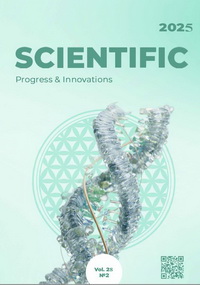Veterinary and sanitary evaluation of sausage products based on quality and safety indicators
DOI:
https://doi.org/10.31210/spi2025.28.02.21Keywords:
quality and safety, organoleptic, physicochemical and sanitary indicators, food additivesAbstract
The analysis of scientific publications and the results of our research have shown that under the current economic conditions, domestic sausage manufacturers often resort to falsification. The primary reason for this is the pursuit of maximum profit and cost reduction amidst intense price competition. Instead of using high-quality raw materials, they opt for cheaper, lower-quality, or even hazardous ingredients. Examples include mechanically separated bone remnants containing microscopic bone particles, the addition of food additives, and the use of stale meat. Manufacturers also use meat preserved with brining after prolonged freezing, cuttered minced meat, substitution of high-quality meat with low-grade alternatives, soy, by-products, as well as tissues and organs not specified in the recipe, such as trachea, larynx, stomach, esophagus, testicles, and uterus. A significant portion of manufacturers do not adhere to DSTU standards (Ukrainian National Standards) and instead develop and approve their own technical specifications (TU), which allow for the production of lower-quality products. To reduce costs, natural raw materials are replaced with artificial components such as flavorings, taste enhancers, stabilizers, colorants, emulsifiers, thickeners, modified starch, and soy. As a result, the content of natural components, which have vital biological value and beneficial properties, is significantly reduced. Of particular concern is the use of soy and corn, which may contain GMOs, yet some manufacturers fail to disclose this on product labels. The sanitary quality of sausage products is also a significant issue. Bacteriological studies indicate that such products can be contaminated with coliform bacteria (CB), salmonella, molds, yeasts, and may exceed permissible levels of mesophilic aerobic and facultative anaerobic microorganisms (MAFAnM). This points to inadequate veterinary and sanitary control at all stages of production, storage, transportation, and distribution of products. The market offers a wide range of sausage products containing food additives labeled with "E" (e.g., E102, E110, E122, E124, E211, E250, E320, E450, E951). While permitted for use in Ukraine, these additives are banned in many countries due to their adverse effects on consumer health. As part of our study, we analyzed the labeling of dry-cured, semi-dry-cured, smoked, and boiled-smoked sausages sold in supermarkets in Zhytomyr. It was found that most products were manufactured according to TU rather than DSTU. Products made according to DSTU were of higher quality: the meat content ranged from 97–100 %, and food additives and preservatives were used minimally. Among the 17 analyzed sausage samples, 23 types of additives were identified, with sodium nitrite, one of the most hazardous ingredients, present in all samples. Veterinary and sanitary assessments have demonstrated that the quality and safety of meat products in Ukraine require continuous monitoring and public reporting. The leading role in protecting the population from unsafe sausages belongs to manufacturers and specialists of the State Service of Ukraine on Food Safety and Consumer Protection (Derzhprodspozhyvsluzhba). They must ensure a clear control system and promptly remove hazardous products from circulation.
Downloads
Published
How to Cite
Issue
Section
License
Copyright (c) 2025 Scientific Progress & Innovations

This work is licensed under a Creative Commons Attribution 4.0 International License.

 Creative Commons Attribution 4.0 International Licens
Creative Commons Attribution 4.0 International Licens